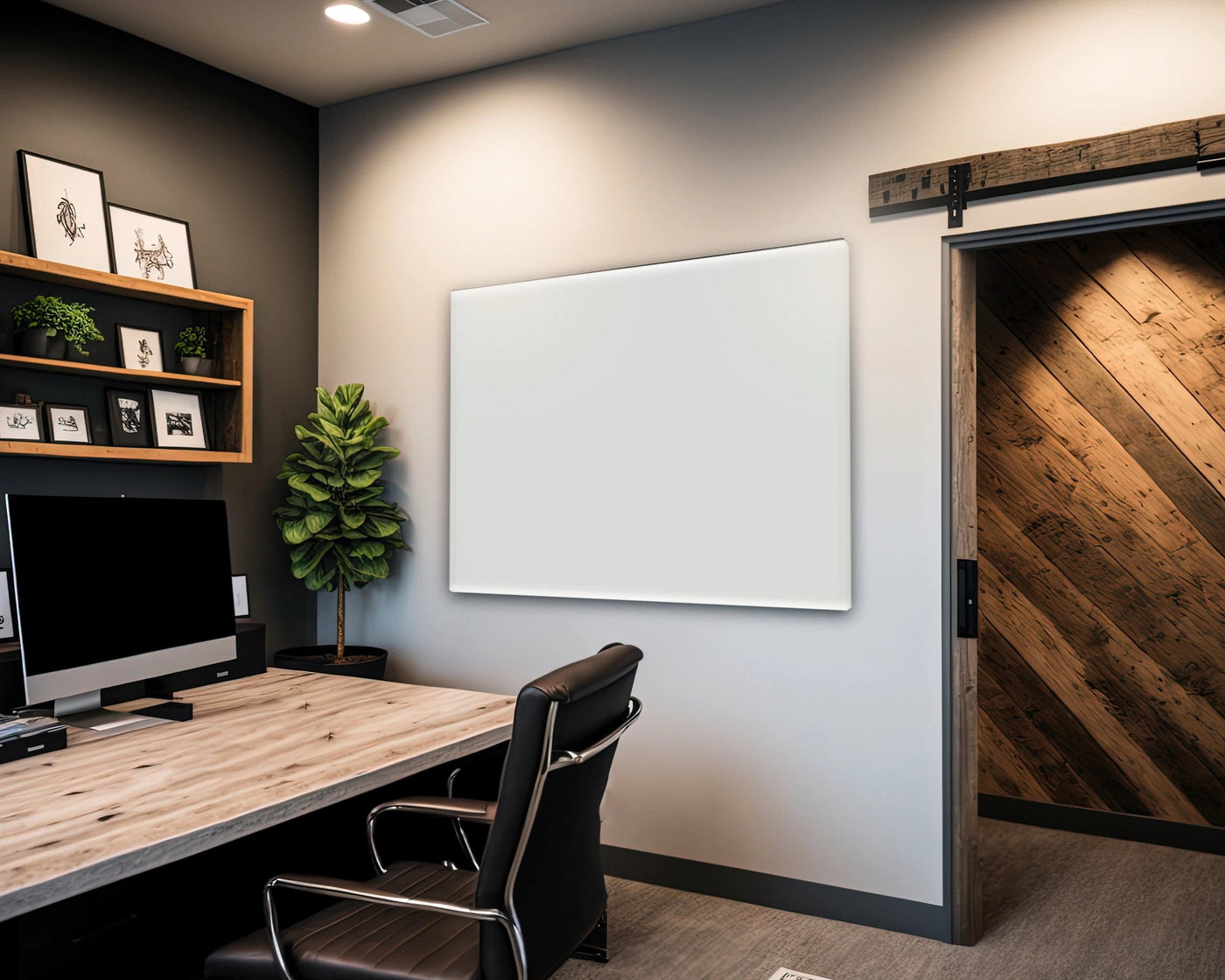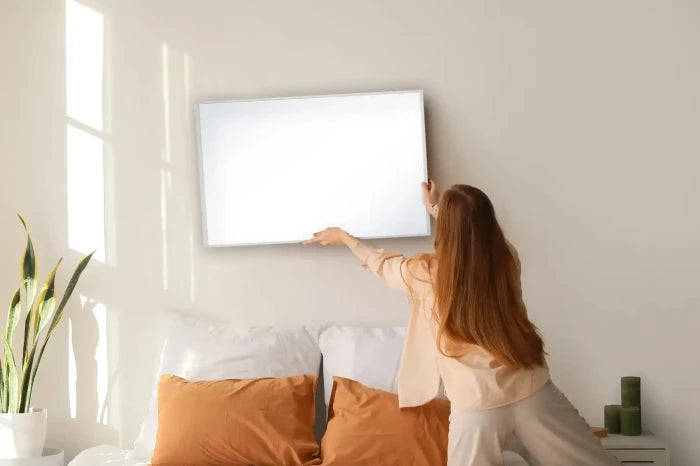In this day and age, there are multiple ways to heat your home, but finding the right heating system can be more than just a little bit difficult, since whatever you choose needs to be suited to your needs and you also need to consider what will be best for your wallet. As we are still going through the winter season, deciding when to keep your heating on and how long for can become very expensive, especially with the rising energy costs. This blog will look to explore the most common types of heating across the UK.
A census taken in 2021 found that 73.8% of homes used mains gas, 9.1% used central heating, 8.5% used electric heating, 3.5% used oil and 2.5% used other forms of central heating such as solid fuel or renewable. Since it is 2024, no doubt that the numbers would have changed ever so slightly, especially since new homes now being built come without gas and run only on electricity.
1. Gas Based Central Heating
This type of central heating is a common standard heating system in the UK. It heats multiple rooms in a building by circulating water or air through the pipework. Installing a gas central system can be expensive and invasive, especially if your home is not on the gas network. Prices to run can vary, as they depend on the global supply so they can fluctuate at a moment's notice.
However, one of the biggest disadvantages is the maintenance cost. A piece of equipment like this would require maintenance for it to run smoothly. When a boiler breaks down, the entire heating system within the home/building stops working – including the hot water. A technician would need to be called out at the last minute, which can cost anything from £90 to £200 (and potentially more if the whole thing needs replacing).
Natural gas is considered a cleaner type of fossil fuel but only compared to coal or oil. It will still produce drastic amounts of carbon emissions when burned and will add to the greenhouse gas emissions and air pollution – contributing to climate change. Carbon monoxide detectors must be used when using central heating to ensure that it is running safely without causing any harm.
2. Electric Central Heating
A lot of homes (especially new buildings) are not connected to the national grid, so as a result, they rely on electric heaters and electric cookers. They were invented in the 1920’s in Germany and became widely used in the UK in the 1950’s and 1960’s, especially in social houses as they were cost effective at the time. The idea of these was to ‘store’ energy at night and release this stored heat back into the home/building to retain a certain temperature. Since this, convection electric heating has come a long way and now by law (and LOT20), they are required to come with programmable timers, thermostats and thermostat controls, however, the get a good quality storage heater with all the bells and whistles can be costly.
There are many forms of electric heating, however, some of these options can be expensive to install and run. Electric heating systems can have a slower response time, especially compared to other heating systems. Because of this there can be cold spots which can be very uncomfortable for occupants – especially in larger spaces. Running costs can also vary, the current average across the UK is 29p per Kw. The average storage heater is at least 2Kw, so to run this per hour would cost you 58p, but unfortunately you would need to keep this on for a few hours at least to maintain a certain temperature. If your home is poorly insulated, this heating system may not be sufficient, which can lead to increased energy consumption to compensate for inadequate heating.
3. Oil Based Central Heating
Compared to gas or water based central heating systems, having an oil central heating system can mean that there will be an increased impact on the environment. In the UK there are still 1.1 million households that are heated by oil. The boiler is fuelled by oil, which heats up the water then distributed to every radiator in the home. The oil is stored in a tank outside by the supplier. Luckily, nowadays there are friendlier fuel alternatives that are cleaner such as low-sulphur and ultra-low sulphur biofuels, however this can be more expensive.
Because of the external storage tanks which would be installed by the supplier (which can be rather costly to begin with), you can stock up on oil, but the prices of this can fluctuate due to supply or even political unrest – especially during winter, when you need it most.
As outlined in the 2018 Clean Growth Strategy, the UK government is strongly advising against oil and gas central heating systems and are aiming to phasing it out by the year 2025 and each home will need to use low-carbon heating solutions.
4. Infrared Heating
If you are in search of a greener solution, Far Infrared radiant heating (also known as FIR) is a customized heating solution that is adapted and calculated to each room to provide the RIGHT amount of heat. Even though IR heating has been around for years, it's still relatively new within the UK, especially amongst domestic properties.
Infrared heating panels and bars are not only extremely efficient and highly effective, but they also have the potential to reduce your energy bills. Instead of heating the surrounding air, it heats humans and pets as well as the foundation of the house, minimizing heat loss via infrared radiation waves. This type of warmth is the same type of heat as we would receive from the sun. The heat is not visible, and doesn’t contain UV light, but it directly gets absorbed by skin and any molecules within an object. One of the most popular advantages to using this system is combining it with SOLAR PANELS.
What are the health benefits of infrared heating?
1. Prevents Mold and Condensation:
As mentioned previously, IR heating heats up the foundation of your home and because of this, it helps to prevent mould. Having central gas/oil heating, means that the heat produced will raise up, along with the moisture, preventing condensation and dampness.
2. Allergy Friendly and Better Air Quality:
IR radiant heating doesn’t use air to heat up a space so therefore dirt and dust within a room doesn't move around which improves the air quality dramatically.
3. Better Skin and better Breathing:
Along with helping with health conditions and issues such as severe allergies, it also helps with blood circulations, insomnia and pain relief. It can help the production of collagen the helps the skins elasticity and firmness.
4. Dual Functioning Panels
Kiasa IR panels tend to be a popular choice in domestic properties and can have more than one function which can include:
- Artwork to add a pop of colour to your room. Popular choices include famous paintings by Vincent Van Gogh or Leonardo Da Vinci.
- Personalised images of members of family or pets (my personal favourite).
- Coloured glass such as white or black for a glossy finish. Install this with a towel rail and use is in a bathroom.
- Mirror glass finish with LED lights so you can use it as a source of light in a bathroom, bedroom or hallway.
They are a space saving solution that are extremely easy to install. Installing them high on the wall (eye level or above) or even directly above on the ceiling to maximise the panel and prevent potential cold spots.
Depending on the company you use purchase your heaters from, the first initial cost to install these heaters could be expensive. At Kiasa, we aim to provide the most affordable and effective healthy heating solutions that is catered to your needs. Most heaters are just simply plug and play and come with a fused 3 pin UK plug. With carbon crystal technology, it reaches targeted temperatures quickly without draining your electricity.
Not only would you save on your monthly bills, but you can say no further additional costs such as annual maintenance. Zoning each rooms becomes a possibility and with that, adapting the heating times to your daily schedule means you won’t be wasting electricity where it doesn’t need to be. Since the heat produced is instant, it is ideal for spaces that is poorly insulated and even draughty, since wind has little to no effect on this type of heating.
In the end, the heating solution you chose needs to be one that is best suited to your needs. Things like budget, space, and what the area is used for needs to be considered. For a renewable energy solution for your home or building, IR heating could be the choice for you since they are low wattage heaters with high energy output, making it a very cheap way to keep your home cozy during the winter period. The heat will gently warm up your home, preventing any heat loss while updating the look of your home as well. Though the initial cost to install these heaters in every room could be expensive, in the long run, there and more savings since you wouldn’t need to keep them on for as long as you would need to. If you are unsure and would like to know if IR heating is the best choice for you, please get in touch by calling us on the phone 0116 488 5150 or emailing us at customer.support@kiasa.co.uk




